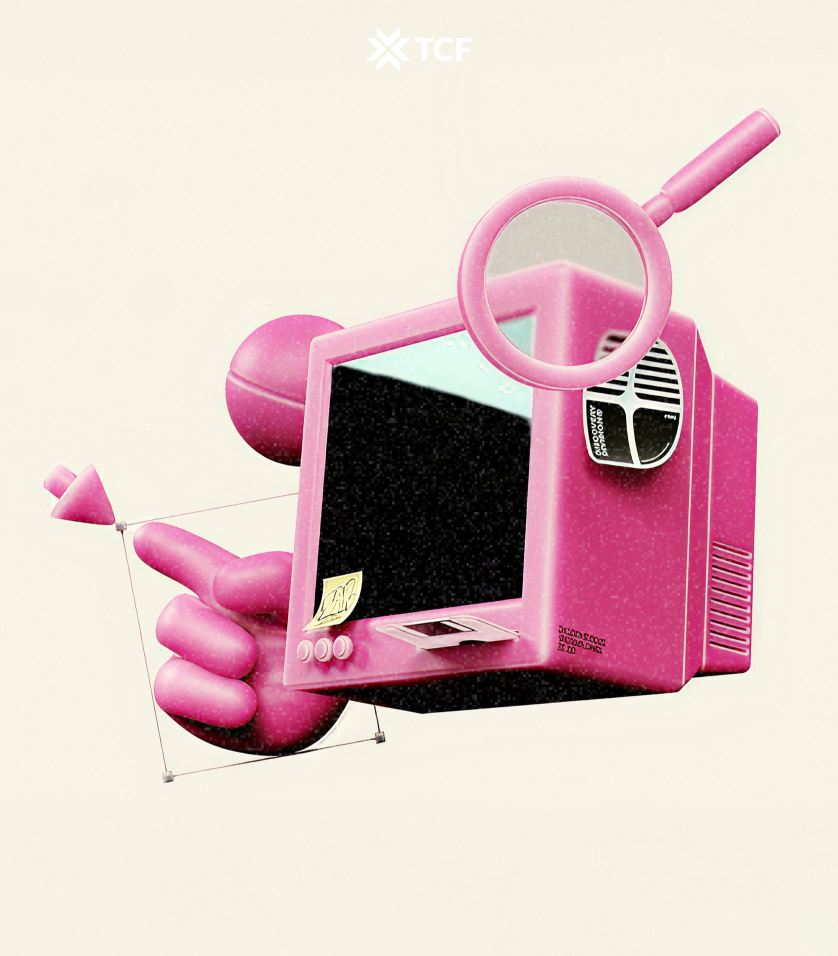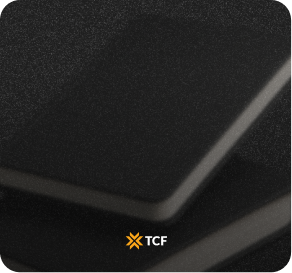Consumer electronics are finally growing up. The industry that once lived on yearly hype cycles is now learning patience and purpose. Not saying innovation has slowed but it’s definitely just gotten smarter about what matters.
2026 sits at an interesting crossroads. The big players feel less obsessed with spectacle and more focused on building tech that earns long term trust. Consumers have raised their standards, and the market is shifting to match that mood.
This article looks at where that shift is taking the industry in 2026, what’s powering the change, and how it shows up across the major product categories. You’ll also see how consumer expectations are evolving and what these moves mean for everyone involved, from teams building devices to companies trying to stand out in a crowded market.
[[cta5]]
The Macro Forces Redefining Consumer Electronics
Innovation in 2026 is more focused and intentional. The industry is refining how technology performs, how long it lasts, and how responsibly it is made.
Four major forces define this shift.
1. On-Device AI and Edge Computing
AI is now built directly into devices. Neural chips handle language translation, image editing, and personalization in real time. This keeps data private and reduces reliance on cloud processing.
IDC reports more than 370 million AI-enabled smartphones shipping in 2025, representing about 30 percent of the global market. By 2029, the share will reach 70%. Processors such as Apple’s A18 Pro and Qualcomm’s Snapdragon 8 Gen 4 are built for this purpose.
On-device intelligence is becoming a default expectation for smartphones, laptops, and wearables.
2. Next-Gen Connectivity: 5G Advanced, Wi-Fi 7 and Satellite Links
Connectivity is reaching a new level of consistency. Wi-Fi 7 brings multi-gigabit speeds that support streaming, gaming, and mixed reality applications with ease. 5G Advanced improves coverage and latency, supporting more connected devices in dense environments.
Smartphones are also gaining satellite communication features. Apple’s Emergency SOS and Qualcomm’s two-way satellite messaging ensure connectivity in remote areas. Reliable connection is now an essential feature across consumer electronics.
3. Design for Longevity and Repairability
Governments and consumers are demanding longer-lasting devices. The European Union’s USB-C and replaceable-battery regulations are leading this shift toward repairable and modular design.
Framework’s modular laptops proved that consumers value products they can maintain and upgrade. Major brands are responding with more accessible components, clearer repair guides, and longer software support timelines. Durability and long-term use now drive purchasing decisions.
4. Sustainability and Supply-Chain Ethics
Sustainability now defines how tech is built. Recycled materials, efficient components, and transparent sourcing shape every product line. Brands publish ESG goals, audit factories, and commit to carbon reduction across their supply chains.
These forces set the rules. Now, here’s how they play out across the devices you’ll actually use every day.
Consumer Electronics Trends by Category
%20(1).png)
Each device category is evolving on its own timeline, shaped by AI, sustainability goals, and user fatigue with yearly upgrades. Here’s how the core segments are shifting heading into 2026.
1. Smartphones and Tablets
The smartphone race is losing its obsession with megapixels and finding new meaning in intelligence. In 2026, devices focus on independence, running real-time AI for editing, translation, and organization directly on the chip. The experience feels smoother, faster, and far more personal.
Battery innovation gains momentum. Solid-state prototypes and 120W charging appear in flagship releases, while modular and repairable builds become design standards under new EU regulations for USB-C and replaceable batteries.
Foldables begin to mature into practical tools for creators and professionals, while tablets keep evolving into laptop-level devices with OLED and Mini-LED displays that make everyday work feel seamless.
What Will Make Users Upgrade Again
Meaningful AI features, long-lasting performance, and visible sustainability progress drive the next upgrade wave.
2. Laptops and PCs
Laptops in 2026 take a major step toward self-sufficiency. Built-in neural processors automate everyday tasks, from transcribing notes to cleaning up visuals, without touching the cloud. AI is no longer a CEO buzzword but a part of the workflow.
Battery life crosses the 20-hour mark across leading models, powered by efficient ARM and x86 chips. Users can work, stream, and edit all day without carrying a charger like it’s life support.
Repairability and longevity move into the mainstream. Modular designs and accessible components replace glued shells, as EU regulations push for devices that last longer and waste less. What began as a sustainability trend has become a design requirement.
The New PC Upgrade Trigger
AI-driven workflows, quiet efficiency, and a longer lifespan define the next reason to upgrade.
3. TVs and Home Entertainment
Televisions now lean into immersion, scale, and intelligence, building on the groundwork of the last few years. Screens keep growing past 70 inches, but the real competition happens in color accuracy, contrast, and energy efficiency. OLED and Mini-LED dominate the premium tiers, while Micro-LED starts to break through luxury price walls.
The smart TV has officially turned into a content hub. Interfaces curate instead of clutter, powered by AI that learns viewing habits and simplifies discovery. Voice control works smoothly, and built-in apps handle streaming, gaming, and recommendations with zero friction.
Sustainability keeps shaping design. Lower standby power, recycled materials, and extended product lifespans are the expected norm.
What Keeps TVs Selling
People upgrade for better experiences instead of higher resolutions. Smarter software and ecosystem harmony now sell the screens.
4. Wearables: Smartwatches and Health Tech
Wearables focus on knowing you better than ever: quietly, accurately, and without turning your wrist into a lab report. Smartwatches and earbuds evolve into daily health companions, tracking heart rhythms, temperature, stress, and sleep with near-clinical precision.
Noninvasive glucose monitoring and blood pressure tracking start rolling out in early models, marking a shift from wellness to genuine medical utility. The data no longer sits idle: on-device AI interprets it, flags changes, and offers advice in real time.
Design follows function but doesn’t forget fashion. Slimmer cases, recyclable materials, and more luxury collaborations make wearables blend into style rather than compete with it.
What Makes People Strap In
Accuracy, comfort, and intelligent feedback win loyalty. The more a device quietly improves daily life, the more indispensable it becomes.
5. AR/VR and Mixed Reality Devices
AR and VR are finally earning their spot in everyday tech. Headsets get lighter, cheaper, and less awkward to wear for more than ten minutes. Smart glasses edge closer to normal eyewear, adding AI-powered translation, navigation, and instant information overlays that feel natural.
The market expands beyond gaming. Spatial productivity, virtual fitness, and immersive entertainment gain traction as software ecosystems mature. Major players like Meta, Apple, and Xiaomi keep driving momentum, while new partnerships between tech and eyewear brands push AR into mainstream design.
Mixed reality becomes the bridge, blending digital visuals with real-world surroundings through responsive sensors and sharper passthrough displays. The result is technology that feels like an extension of physical space.
The Tipping Point for Immersion
Comfort, style, and real-world relevance decide adoption. The devices that disappear into daily life win the battle.
6. Smart Home Devices and Robotics
In 2026, the smart home finally starts feeling smart. Devices sync more naturally across brands, powered by the growing adoption of the Matter 1.3 standard. Lights, thermostats, speakers, and appliances speak the same language, cutting down on setup chaos and app fatigue.
AI turns home automation from “voice commands” into “anticipation.” Systems learn patterns, adjusting lighting, temperature, and even grocery lists before you ask. Privacy remains a defining concern, so local processing becomes the default for major ecosystems like Google Home, Alexa, and Apple Home.
Domestic robots move beyond novelty. Floor cleaners and lawn bots gain dexterity, while early multipurpose assistants appear in higher-end households. They fold laundry, fetch items, and occasionally bump into furniture less often than before.
The Smart Home’s Real Upgrade
Interoperability, automation that feels human, and trustworthy privacy controls are what transform connected homes into helpful ones.
7. Gaming and Entertainment Hardware
Gaming hardware in 2026 is built for immersion. Consoles, PCs, and handhelds focus on smarter performance: AI-assisted rendering, adaptive refresh rates, and faster cloud connections that make gameplay seamless across screens.
Handheld devices keep climbing. The success of the Steam Deck and its rivals inspires a wave of compact systems that deliver desktop-level graphics in travel-sized frames. Cloud streaming fills the rest of the gap, letting players pick up where they left off on any device.
Virtual and mixed reality integrate deeper into gaming ecosystems. Major studios build titles that flex both AR and VR features, while TV manufacturers embed low-latency gaming modes by default.
Sustainability creeps into the conversation too. Modular controllers, recyclable shells, and energy-efficient consoles turn eco-conscious design into a competitive edge.
The New Player Advantage
Gamers now chase continuity. The best gear adapts, syncs, and responds faster than the player can think.
The Consumer Shift
Every tech cycle brings new products, but 2026 is bringing a new mindset. The way people evaluate and connect with their devices is changing, and those shifts are starting to reshape the entire market.
Here are the key behavioral ones redefining how consumers buy, use, and value technology.
- Upgrade Fatigue & “Good Enough” Tech
Consumers are tired of chasing marginal gains. When every new phone looks and feels the same, excitement fades. Devices last longer, both physically and emotionally, thanks to stronger hardware, software updates, and better repairability.
The new driver is emotional value. People upgrade when a product improves their experience in a visible way: smarter AI, smoother sync across devices, or more sustainable design. The market’s challenge is to prove purpose.
- Affordability & the Refurbished Boom
Refurbished and certified pre-owned tech has turned into a global movement. With prices climbing and innovation slowing, more consumers see refurbished devices as smart, sustainable choices.
The numbers back it up: the pre-owned market grows 10–15 percent annually, driven by trade-in programs and trusted resellers. High-end brands now treat refurbishment as strategy: complete with warranties, new packaging, and upgraded parts. Owning the latest no longer means buying new.
- Privacy and Digital Trust
After years of vague promises, privacy has become a purchase factor. Consumers prefer brands that explain how data is used. On-device AI helps by reducing cloud dependency, making security a built-in benefit instead of a checkbox.
Transparent permissions, visible privacy dashboards, and regional data storage all strengthen digital trust. In 2026, the brands that don’t treat user data as transactional, earn loyalty that marketing money can’t buy.
- Regional Differences
Consumer priorities split by region. China leads in hardware innovation and local AI ecosystems. Europe enforces the strictest sustainability and repairability standards. The US focuses on AI-driven software experiences and service integration. India’s growth hinges on affordability, local manufacturing, and value-for-money ecosystems.
The global market still moves together, but the rhythm differs. Each region shapes its tech identity around what its consumers value most.
What It Means for Industry Players
As consumer expectations evolve, the path forward for the industry is taking shape. To stay relevant, every player in the consumer electronics space will need to adapt their approach to match what people value most. Here’s how that plays out in practice.
For Product Managers
Hardware is only half the story now. Building for 2026 means pairing performance with intelligence, designing devices that think, learn, and last.
- Prioritize AI-ready components and seamless integration across ecosystems.
- Extend product lifecycles with longer software support and repair-friendly builds.
- Get ahead of compliance on USB-C, recyclability, and right-to-repair mandates.
The winning devices will be those that evolve with their users, not the ones that peak at launch.
For Marketers and Brands
Specs still matter, but they no longer sell on their own. Consumers care about what technology means in their daily lives.
- Center messaging on usefulness, sustainability, and trust.
- Highlight AI as a time-saver or creative enabler.
- Bring transparency forward: how products are made, updated, and protected.
Authenticity and clarity now beat feature lists and jargon every time.
For Investors and Retailers
Innovation cycles are lengthening, but opportunity is widening.
- Focus on categories where AI meets health, sustainability, or productivity.
- Expect mid-tier smart devices and home automation to drive the next volume wave.
- Track regulation and repairability as long-term value indicators, not obstacles.
The market is maturing, but the smart money is already pivoting to where intelligence meets intention.
Conclusion
2026 is the year everything comes due. The experiments of the past few years finally face their reality check. AI has to prove real utility, sustainability commitments have to survive factory floors, and every so-called smart product has to earn its place in the ecosystem. The foundations are already there, AI ready chips, cross brand standards, and repair friendly designs are moving from ideas to expectations.
Progress feels quieter this time, but it’s stronger. Devices are thinking faster, connecting smoother, and aging slower, and consumers notice when something is built with intention. This year rewards products that hold their value even after the hype fades, the ones that feel thoughtful and built to last.
The future of consumer electronics moves toward endurance, clarity, and long term trust. The companies that lean into that direction will define the years ahead.
[[cta5]]






.png)


.png)


.jpg)

